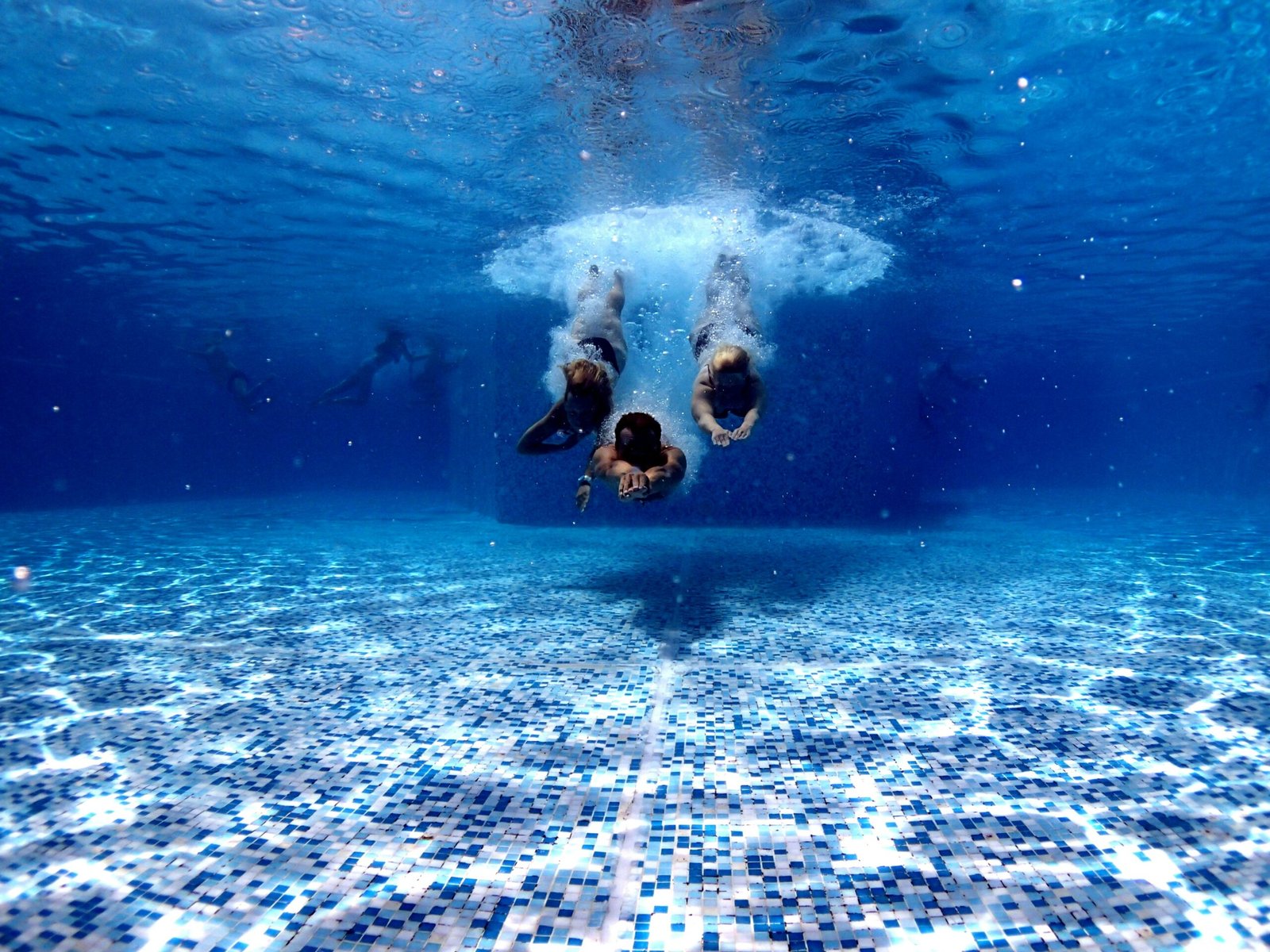Introduction to Mud Runs and Obstacle Course Races
Mud runs and obstacle course races (OCRs) have gained immense popularity in recent years, captivating a wide range of participants. These events are characterized by their unique combination of running and physical challenges, often set in outdoor environments that incorporate natural terrains, water features, and, of course, mud. Designed to test both physical endurance and mental toughness, they are suitable for participants of varying fitness levels.
There are several types of mud runs and obstacle course races, each offering distinct experiences. Traditional mud runs typically emphasize the fun and camaraderie aspect, featuring a range of mud pits and obstacles designed to be completed in a playful environment. On the other hand, competitive OCRs may require participants to navigate a course with rigorous challenges, reflecting a more athletic focus. These events can include wall climbs, rope climbs, and various strength-based tasks, appealing to those who enjoy pushing their physical limits.
The mental and physical challenges presented by these races are significant. Participants must not only strategize on how to navigate the obstacles but also maintain motivation amidst both physical exertion and potentially difficult weather conditions. Many find that the sense of accomplishment after completing a mud run or obstacle course race is unparalleled, as it often requires overcoming fears and pushing through discomfort. This mixture of fear, excitement, and the thrill of competition contributes to the growing fervor surrounding these events.
The rise in popularity of mud runs and obstacle course races can be attributed to a variety of factors, including the social interactions they foster and the health benefits they offer. Communities form through the shared experience of training and competing, and many participants appreciate the opportunity to engage with like-minded individuals. As a result, these events continue to thrust into the spotlight, offering both challenges and rewards for new and seasoned participants alike.
Understanding the Obstacles
Participating in a mud run or an obstacle course race presents a variety of physical challenges. These races typically comprise an array of obstacles designed to test endurance, strength, and agility. One of the most recognizable challenges participants face is the climbing wall. This obstacle requires not just upper body strength but also coordination and balance, as competitors must scale vertical surfaces to continue their race.
Another common feature in these events is the mud pit. Runners must navigate through thick, slippery mud, which poses a significant risk of losing traction and balance. The added weight of mud can slow down a participant’s pace, increasing the difficulty of the course. Training for this type of obstacle involves practicing running on uneven surfaces and cultivating core strength to maintain stability while progressing through slippery conditions.
Water obstacles are also prevalent in mud runs, where participants may have to swim, wade, or traverse through pools. These challenges can vary from shallow water requiring jumps to deeper sections demanding swimming skills. Familiarity with such water environments can be beneficial, influencing how one trains for speed and agility within aquatic settings.
Crawling sections are another essential component of obstacle races, often involving competitors maneuvering under bars or through ditches. These obstacles test upper body strength and coordination while forcing participants to work on their body mechanics in confined spaces. Effective training regimens often include exercises focused on core stability and overhead strength to benefit performance in these scenarios.
In essence, the understanding of these varied obstacles is crucial. The more familiar one is with the types of challenges presented, the more strategic and tailored the training approach can be, ultimately leading to improved performance on race day. A keen awareness of each obstacle’s demands will significantly enhance one’s preparation, allowing participants to tackle the course more effectively.
Setting Your Fitness Goals
When preparing for a mud run or obstacle course race, establishing clear and attainable fitness goals is crucial for success. The first step in this process is to assess your current fitness level. This assessment can be conducted through various methods, such as performing a basic fitness test that evaluates endurance, strength, and agility. Understanding where you stand will help you identify areas that require improvement and tailor your training regimen accordingly.
Once you have evaluated your fitness level, the next step is to choose a race distance that matches your abilities and aspirations. Mud runs and obstacle races vary significantly in length and difficulty, ranging from 5K to half-marathon distances. Consider factors such as your experience in similar events, your physical capabilities, and how much time you can realistically dedicate to training. Selecting a distance that challenges you without overwhelming you will keep you motivated and focused throughout your training journey.
Establishing a time frame for your training is equally important. A well-structured training plan should account for the duration you have before race day. This timeline should allow for gradual increases in training intensity and volume, reducing the risk of injury while enhancing your performance. Additionally, incorporating both short-term and long-term goals can provide valuable milestones. Short-term goals could include completing specific workouts or improving specific skills, while long-term goals might focus on finishing the race within a certain time or completing a more challenging course in the future.
By establishing realistic fitness goals tailored to your mud run or obstacle course race, you pave the way for a structured and effective training regime. A clear focus on assessing your current abilities, choosing an appropriate race distance, and creating a timeline will significantly enhance your preparation and overall experience.
Creating a Training Plan
When preparing for a mud run or obstacle course race, devising a structured training plan is crucial. This plan should include a balanced weekly workout schedule that incorporates strength training, endurance exercises, and agility drills. A well-rounded program not only builds overall physical fitness but also specifically addresses the unique challenges presented by obstacle courses.
To begin, allocate days for strength training at least two to three times a week. Focus on compound movements such as squats, deadlifts, and push-ups to enhance overall muscle strength. Additional exercises like kettlebell swings and rows can further target essential muscle groups. Endurance training is equally vital and should consist of running or cycling sessions, ideally three times a week. Gradually increase your distance and intensity to build stamina, which is critical for completing the lengthy courses typically found in mud runs.
A key component of your training plan should consist of agility exercises, which prepare you for fast-paced movements and quick direction changes encountered on the course. Incorporate ladder drills, cone sprints, and plyometric exercises twice a week to enhance speed and coordination. Moreover, it is essential to include obstacle-specific training. Identify the types of obstacles you may encounter and design sessions that simulate these challenges. Practice climbing walls, monkey bars, and tire flips to become proficient at navigating these elements.
Lastly, ensure that your training plan allows for adequate rest and recovery. Cycling between high-intensity workouts and lighter activity days will help prevent injuries and improve performance. Personalize your training schedule based on your fitness level, gradually increasing the intensity as your conditioning improves. By following a structured and varied training regimen, you will be well on your way to conquering your mud run or obstacle course race with confidence.
Building Strength and Endurance
Participating in a mud run or obstacle course race requires a combination of strength and endurance to effectively navigate the various challenges. Strength training is essential for building muscle power, while aerobic workouts enhance cardiovascular fitness and stamina. Together, these elements prepare individuals for the physical demands of the race.
When it comes to strength training, compound exercises that engage multiple muscle groups are particularly effective. For example, squats are excellent for building the quadriceps, hamstrings, and glutes, which are critical for climbing obstacles and running over uneven terrain. Additionally, deadlifts primarily target the posterior chain, including the back and glutes, promoting overall strength crucial for lifting and carrying during the race.
Another valuable exercise is the push-up; it strengthens the upper body, especially the chest, shoulders, and triceps. Incorporating variations such as the decline or diamond push-up can provide added challenge and target different muscle areas. While these exercises focus on upper and lower body strength, core exercises like planks and Russian twists further support overall stability and strength, ensuring that participants can maintain their balance during tricky sections of the course.
In terms of aerobic conditioning, high-intensity interval training (HIIT) workouts offer a time-efficient method of building endurance. A sample routine could include short bursts of activities, such as burpees or sprinting followed by brief recovery periods. Additionally, incorporating long-distance running or cycling sessions into training schedules can enhance stamina, allowing participants to maintain energy levels throughout the race.
In conclusion, a well-rounded training program that emphasizes both strength and endurance will equip participants with the necessary physical capabilities to tackle the challenges presented in mud runs and obstacle races. Focusing on key strength exercises and aerobic workouts is crucial in achieving peak performance and enjoying the race experience.
Incorporating Agility and Flexibility Drills
Training for a mud run or obstacle course race requires a multifaceted approach, particularly in the areas of agility and flexibility. These two components play a crucial role in successfully navigating various obstacles, which often demand quick directional changes, as well as the ability to stretch and contort the body into different positions. Incorporating specific drills and stretching routines can greatly enhance your coordination, balance, and overall mobility, ultimately improving your performance during the race.
Agility drills such as ladder drills, cone weaving, and shuttle runs can be effectively employed to boost your quickness and footwork. Ladder drills allow participants to work on their foot speed and coordination. By setting up a ladder on the ground and executing various foot patterns, individuals can enhance their ability to move swiftly and efficiently. Cone weaving introduces an element of direction change, which is essential for navigating obstacles encountered during a race.
In addition to agility, flexibility is vital for preventing injuries. Stretching routines should be integrated into the training regimen to ensure muscles and joints remain loose and adaptable. Dynamic stretching, such as leg swings and arm circles, can be included in warm-up sessions, while static stretches focusing on major muscle groups should be conducted post-workout. This practice will improve muscle elasticity and joint range of motion, enabling participants to perform actions like jumping or climbing more effectively.
Furthermore, incorporating movements that mimic the specific challenges of a mud run can be beneficial. Exercises like bear crawls, lateral lunges, and high-knees work both agility and flexibility simultaneously. By focusing on these tailored drills, individuals will not only prepare their bodies for the rigors of the course but also cultivate a training framework that highlights the essential nature of agility and flexibility in obstacle racing.
Nutrition and Hydration Strategies
Preparation for a mud run or obstacle course race requires a keen understanding of nutrition and hydration. These elements play a crucial role in ensuring athletes achieve peak performance during training and competition. A balanced diet is fundamental for those engaging in endurance training, providing the necessary fuel to maintain energy levels and aid recovery.
A well-structured diet for mud run enthusiasts should incorporate an array of macronutrients. Carbohydrates, the body’s primary energy source, should account for approximately 50-60% of daily caloric intake. Foods such as whole grains, fruits, and vegetables are excellent sources. Proteins are equally important, contributing to muscle repair and growth. Athletes should aim for 15-20% of their daily calories from lean protein sources such as chicken, fish, tofu, or legumes. Finally, healthy fats should make up 20-30% of the diet, with options including avocados, nuts, and olive oil that support overall well-being and nutrient absorption.
Hydration is another key factor to consider when training for a mud run. Athletes should prioritize fluid intake before, during, and after workouts to maintain optimal performance and recovery. Before exercising, it is advised to drink water or electrolyte-rich beverages at least two hours prior to working out, ensuring proper hydration levels. During long training sessions, sips of water every 15-20 minutes will help sustain endurance, while replenishing lost electrolytes is crucial for anything lasting over an hour.
Post-workout nutrition is equally vital; athletes should aim to consume a balanced meal or snack comprising carbohydrates and proteins within 30-60 minutes post-exercise. This practice aids in muscle recovery and glycogen replenishment, setting the stage for future training sessions. Additionally, understanding personal dietary needs and adjustments can further enhance performance during the challenging demands of mud runs and obstacle courses.
Mental Preparation Techniques
Mental preparation plays a crucial role in ensuring optimal performance during a mud run or obstacle course race. Participants often encounter not only physical challenges but also mental hurdles that can affect their ability to execute the planned strategies effectively. One powerful technique to enhance mental resilience is visualization. This involves mentally rehearsing the race day scenario, from the starting line to navigating obstacles. By vividly imagining overcoming specific challenges, such as climbing walls, participants can create a sense of familiarity and reduce anxiety associated with unexpected components of the race.
Meditation is another effective technique that can help racers achieve mental clarity and calmness. Incorporating regular meditation sessions into the training regimen can foster a present-moment awareness, allowing individuals to center themselves before facing the rigors of a mud run. This practice not only aids in relaxation but also helps in managing any pre-race jitters, enabling participants to approach their race with a focused mindset, promoting overall confidence in their abilities.
Goal-setting further enhances mental preparation by providing clear benchmarks for success. By establishing both short-term and long-term goals, participants can maintain motivation and track progress throughout their training journey. Short-term goals might focus on completing a specific distance or mastering a particular obstacle, while long-term goals may relate to overall race performance. This structured approach fosters a sense of purpose, ultimately contributing to improved concentration and determination on race day.
In summary, integrating mental preparation techniques such as visualization, meditation, and goal-setting into training can significantly bolster confidence and mitigate anxiety for those participating in mud runs or obstacle course races. Implementing these strategies not only prepares the mind for the physical demands of the race but also enhances the overall experience, leading to a more fulfilling athletic endeavor.
Race Day Tips and Strategies
As the day of your mud run or obstacle course race approaches, preparation becomes crucial for optimizing performance and ensuring a positive experience. Comfort and functionality are key considerations when selecting attire. Wearing moisture-wicking clothing is advisable, as it helps keep the body dry and cool throughout the race. Sturdy shoes with a good grip are essential, as they provide the necessary traction on muddy terrain and uneven surfaces. Additionally, consider wearing gloves to protect your hands during challenging obstacles.
Pacing is another critical aspect of race day strategy. It is important to start at a comfortable pace and avoid the temptation to rush off with the crowd. Many runners fall into the trap of overexertion in the beginning, leading to fatigue later on. Instead, maintain a steady rhythm that allows for sustained energy levels. Regularly assessing your energy reserves and adjusting your pace accordingly can help improve your overall performance.
When facing obstacles, employing specific strategies can enhance your success. Take time to observe each challenge and determine the most effective approach before starting. For instance, if faced with a wall, consider whether to use momentum or rely on upper body strength. Teamwork plays an invaluable role as well; supporting fellow participants can foster camaraderie and make obstacles seem more manageable. Encouraging one another not only boosts morale but can also lead to creative solutions for overcoming challenges.
Moreover, embracing the spirit of these events is essential. Remember that mud runs and obstacle courses are not solely about finishing times but rather about personal achievement and shared experiences. The enjoyment derived from these races often stems from the collective effort among participants. Cultivating a positive mindset and welcoming the challenges ahead will undoubtedly contribute to an unforgettable race day.







